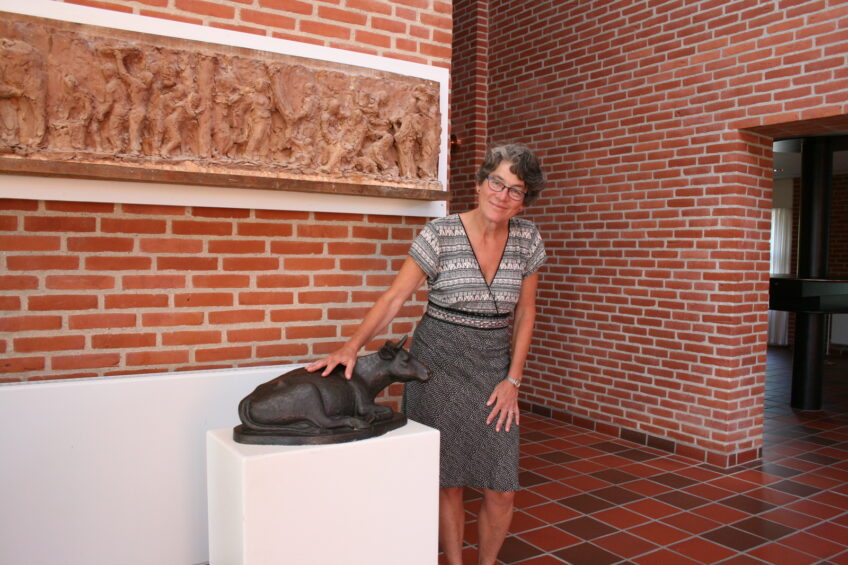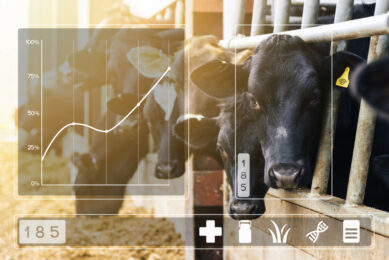Quest for the holy grail of supermilk

It contains almost all essential nutrients, including protein, minerals and vitamins and above all is very healthy. But not all milk is equal, says Mette Krogh Larsen of Aarhus University. She is part of the quest for the holy grail of super milk, milk with intrinsic higher value than ordinary drinking milk.
For the last ten years researchers working on the Milk Genomics Initiative have identified genes that contribute to the natural genetic variation in milk quality traits such as milk-fat and milk-protein composition. In 2008 the Danish Aarhus University joined the now concluded initiative to address local issues concerning milk coagulation properties as some cows produced poor or even non-coagulating milk. Up to 17% of milk in some regions of Denmark didn’t meet the standards of cheese making milk processors. PhD associate professor Mette Krogh Larsen: “Our studies have shown that there is great variation in coagulation ability and that the trait can be heritable. This means that there is breeding potential for selecting cows that are best suited for cheese making. At the end of the day this could improve commercial dairy productivity.”
Larsen: “Now it is time to move on, building on these findings. In the last ten years the focus of dairy processors has shifted. Of course coagulation properties of milk are as important as ever, but evolution in processing makes it interesting to look deeper into milk properties and genetic traits.” New research using the technique of Metabonomics to look at the unique chemical fingerprints of milk at a molecular level revealed that milk contains even more beneficial substances than was previously known and that the presence of these substances differs per cow. “This knowledge brings us closer to finding the way to produce supermilk.”
What made the research focus on the so called supermilk?
“What happened over the course of the Milk Genomics Initiative is that milk processors like the Danish based Arla made advances in making the whey fraction more profitable. Years ago whey was used just as a feed ingredient and later whey powder. Now it is a more refined product which can be used as an ingredient for baby formula and special nutrition. The most valuable part of whey, the complex oligosaccharides, differs in type and quantity per cow and is dependent on the lactation period. Knowing the dynamics of that will help us in advising farmers how to produce supermilk.”
Do you have the blueprint of what supermilk is?
“Here I can give only a yes and no answer. At this moment in time supermilk is milk with an intrinsic higher value than ordinary drinking milk. That value comes from good coagulation properties for cheese making on the one hand and from a high value whey fraction on the other. We want to maximise the particular whey fraction proteins and find the genes responsible for it. That said, the supermilk of today can be a whole lot different to the supermilk of tomorrow. All depends on where the processors are able to add value. Key in our research now is that it has to be relevant to the industry.”
Aren’t you afraid that the planned research will lead in a direction which will have an expiration date due to the
shifting focus of processors?
“In the quest for the supermilk of today the research will surely focus on the cow genes responsible for the most valuable whey protein for this moment. That said, if tomorrows supermilk demands the maximisation of another protein our work will be as important. Discovering which genes do what makes selection possible for numerous milk properties. And to make it even more complicated; we are not only looking at which genetic traits account for certain milk properties, we also look at which genetic traits have an influence on how a cow responds to certain changes in feed in relation to the milk properties it produces.”

Looking at the unique chemical fingerprints of milk at a molecular level revealed that milk contains even more beneficial substances than was known and that the presence of these substances differ per cow
If you look ahead, what will be the next step with the research findings in hand?
“Ideally this will open great opportunities in selection and breeding. We can put our findings on the table of the breeding companies and the dairy companies. Of course there are other traits which will be just as important, such as milk yield, health, robustness, but we could add traits to select upon. Important in the whole process will be the monetisation of supermilk within the whole dairy chain from farmer to dairy processor, from breeding company to retailer. As long as
farmers are not paid extra for producing supermilk, it will not be easy to start with it.”
How realistic is the production of supermilk?
“We know for a fact that we can select for supermilk and that milk with the right and a higher than normal content of oligosaccharides is more valuable. However, the changes in milk collection on the one hand and the time it takes to inventory the genetic traits of cow families and to make the next step in breeding selection will take some years.”
What will be the consequences on a farm level?
“There are three main points to select cows within the herd. First we need to know which cows in the barn produce which milk properties on the basis of genetics. Second there is the way each cow metabolises its feed and third we need to know at what stage the cow is in its lactation. On the basis of this a farmer can divide its milk flow and produce high value supermilk and non-supermilk instead of producing bulk of mediocre quality.”
How does that translate in farm and cow management?
“That is the easiest and fastest part of producing supermilk to implement. By dividing the herd on an individual basis and separating the milk flow into two different tanks every farmer could start producing supermilk with its existing herd. Existing milking equipment with infrared sensors and flip valves, now used to keep the milk of antibiotic treated cows out, are already in place. We just have to identify the cows which produce the sought after milk properties.”
Join 13,000+ subscribers
Subscribe to our newsletter to stay updated about all the need-to-know content in the dairy sector, two times a week.










